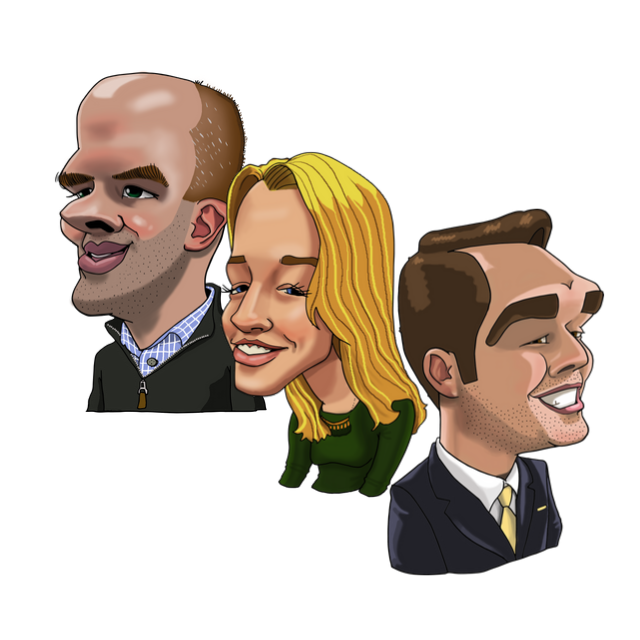The Hidden Cost of a Free Fund
%20-%20Free%20Lunch%20-%20PNG%20-%202-25-2020.png?width=1013&name=Image%20-%20Blog%20Image%20-%20The%20West%20Wing%20-%20The%20Hidden%20Cost%20of%20a%20Free%20Fund%20(Updated)%20-%20Free%20Lunch%20-%20PNG%20-%202-25-2020.png)
For years now, there has been a war in the investment industry, driving down fees as fund companies compete for business. At first glance, lower fees may seem like the answer to investors’ prayers. After all, keeping costs as low as possible is an important pillar to maximizing one’s invested wealth, as it is one of the few things you can control in an uncertain market. While our firm’s investment thesis agrees with this idea, we constantly remind ourselves and our clients that there’s no such thing as a free lunch.
A Brief History Lesson
This might be hard to remember, but there was a time in the not so distant past when mutual funds were rare, most investors owned individual stocks, and everyone paid exorbitant, fixed rates to their broker. Then, May Day 1975 initiated negotiable commissions on trades and everything changed. Soon discount brokerages were born and competition to reduce investing costs escalated.
Meanwhile, the mutual fund industry matured, which delivered access to a diversified portfolio with only one trade, and charged a management fee to compensate them for their work. Later, the Exchange Traded Fund (ETF) was created: a new kind of mutual fund that can trade on exchanges and take advantage of the same discount brokerage pricing model in place for regular stocks. ETFs also began without active management, which allowed them to charge much lower management fees and still make a profit.
Today, commissions have dropped below $5 at some brokerage firms, and the expense ratios of mutual funds and ETFs are under continual downward pressure, regardless of active or passive management. How low can they go? Will the cost of investing continue to approach, or even equal, zero? That would be great, right?!
Expense Ratio Isn't Everything
Aside from fancy names, the cost of ownership is what most people focus on when shopping for funds, because it is the easiest to measure. As we said, recent history has produced a great reduction in the cost of investing and, all else being equal, of course any buyer of a product would prefer a lower price. Thus, we welcome healthy competition in the ETF industry, especially since it can lead to better products and lower prices.
The key term here is healthy. At the end of the day the companies that sponsor these funds need to earn revenue and make a profit to survive, and the expense ratio is the most direct way for the funds to generate this revenue.
Like Millennials, ETFs Have Side Hustles, Too
For anyone who gets junk mail, this shouldn't come as a surprise. The only way your local bank can offer you (and everyone else in your zip code) $250 for opening a checking account is if they expect to make that money back and more sometime soon. ETFs are no different. For example, when a super cheap U.S. large cap stock index fund is launched, a firm might:
| Attempt to raise enough assets to diminish the fixed costs of running the fund |
| This is fine, every good business attempts to achieve economies of scale |
| Have other less traditional (and more expensive) offerings that are suggested to add on to a portfolio |
| Beware of the bait-and-switch! |
| Use an off-brand underlying index that costs less to lease |
| Using a different index than the name brand (e.g. S&P 500) can save the fund money, but then the onus is on the investor to make sure that the Acme United States Large Cap Stock Index that a fund chose is appropriate for their portfolio |
| Use the portfolio to earn some extra revenue via securities lending |
| This might be a new term for many, so we'll explain in more detail |
Sec lending, as it is often called, is the practice of loaning an asset out to someone else who wants it, typically a short seller. They pay an ongoing fee for the privilege of borrowing the security. A portion of this fee goes to the lender (the fund itself, which is good for the investor), and some of it goes to the sec lending agent who introduced everyone. In some cases, the lending agent is affiliated with the sponsor of the ETF, which is how the fund company can make a little revenue out of the transaction. This isn't new with ETFs. Mutual funds have been doing it for a long time, and the practice is regulated by the SEC.
As the lender, the key is to pay attention to the market and the counterparties, and act as a fiduciary for the client (the fund) at all times. A fund that is making money for its sponsor via its standard expense ratio can stop sec lending if the portfolio manager sees trouble in the lending market. Funds that drive their expense ratio so low that the sponsor loses money without supplementary revenue sources like sec lending might find it more difficult to walk away from an irrational marketplace.
The mutual fund and its latest iteration, the ETF, are useful tools that allow many more people to invest efficiently and with confidence compared to fifty years ago. With their development has come evolution, competition, and thousands of choices. Navigating this investing landscape can be difficult, and requires ongoing research and analysis on both the funds already chosen for your portfolio and the new options that will appear in the future.
Comments
Market Knowledge
Read the Blog
Gather insight from some of the industry's top thought leaders on Exchange Capital's team.
Exchange Capital Management, Inc.
110 Miller Ave. First Floor
Ann Arbor, MI 48104
(734) 761-6500
info@exchangecapital.com




